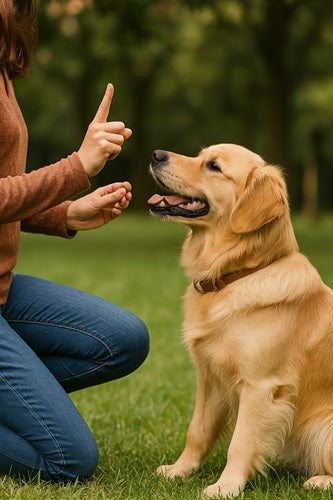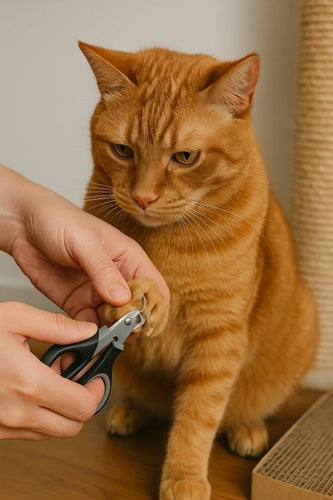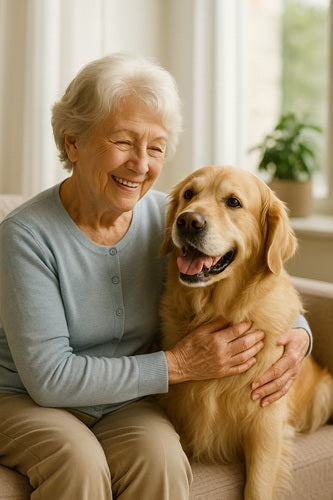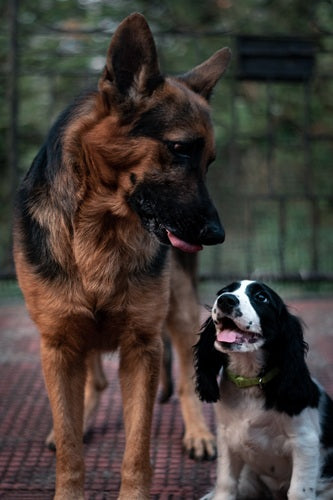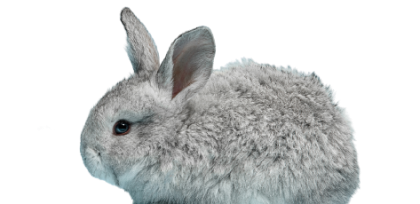How To Introduce A Puppy To Your Adult Dog
You’ve made the decision to adopt a new puppy - congrats! Bringing home a pup can be one of the most exciting times for a family but are you concerned with your older dog’s reaction? Extending your canine family is a tough decision- you have a number of factors to consider, one of which is introducing and making the pets comfortable with each other. We have some tips that can help you make the entire process go smoothly.
Preparations prior to the introduction:
Knowing what to expect and planning well in advance are vital when it comes to bringing a new puppy home and introducing him to your adult dog.
There are two ways this introduction could go- either he would welcome the pup with open paws or he won’t. Here are some tips to make the process effortless.
- Create separate living space in your home for each dog in case they want to play on their own or want to get away from each other for a while.
- To prevent any possessive behavior your older dog might exhibit, keep his belongings in his own space. This may include food bowls, bones, beds and toys.
- Ensure up-to-date vaccinations for both of them. Vaccinations ensure that neither of the dogs will catch any harmful diseases from the other.
- A few days before the introduction, ask the person giving you the puppy to provide you with a towel or blanket that is infused with the pup's scent on it. Likewise, bring the puppy something from your home to familiarize him with his new environment and the scent of the adult dog.
The introduction:
Find a neutral territory: It is recommended to hold their first meeting outdoors. It helps to prevent possessive behavior your older dog might exhibit if they meet at home. A park is an ideal place to introduce the dogs. The relaxing environment and distractions would help your dogs to remain calm and happy.
Use a leash: Ask a companion to bring your new puppy while you take the adult dog. Ensure that both of them are kept on a leash. It is important that you and your companion keep the leashes relaxed and loose to help relieve their anxiety.
Body language: If you have introduced the scent of the dogs to each other prior to meeting, hopefully they will be more receptive and familiar to each other. This leads to a little less strained first meeting. If both are exhibiting appropriate, non-threatening body language, gradually bring them closer together. If you notice a rigid posture, fur standing on end, growling, or aggressive staring, calmly direct their attention elsewhere and then try again after a while.
Interaction without leash: Drop their leashes once they have become comfortable with each other and allow them to interact without it. Don’t let them out of your sight, though, just in case the situation becomes troublesome.
Praising the positive actions: Praise their positive interactions to encourage it and then naturally move together with both of them for a brief walk. This is really important as this could allow your older dog to get used to sharing your time and attention with the new pup.
Going home together: Allow them to take their time to get fully comfortable with each other. Once that happens, you can bring them home together. Let your puppy explore his new home while taking note of your dog’s reaction to the new family member.
Observe their behavior: Closely observe them during the first few weeks of living together. Some dogs tend to befriend each other quickly while some don’t. If they are chasing, tackling or nipping each other, you would know by their growling if they are being playful or threatening because an angry growl is followed by snarling and snapping, while a playful growl is noticeable by relaxed movements. A wagging tail is also an indication of a happy dog so, look out for these behaviors. If there appears to be any signs of territoriality or aggression, keep the dogs apart while they get used to living together.
Increase their quality time together: When you see your puppy and adult dog becoming good pals, gradually increase their playtime to ensure they hit it off successfully. You can have them eat their food at the same time together, create activities for them to do together, etc.
Every dog needs an adjustment period to come to terms that they are living with another pet. As a pet parent, you should remember to spend one-on-one time with both of them equally. This new phase could be difficult for them, so give an abundance of love and affection. It could take days or it could take months before your new dog and older dog mellow into true comfort, therefore, be patient and help them get through this change successfully.

